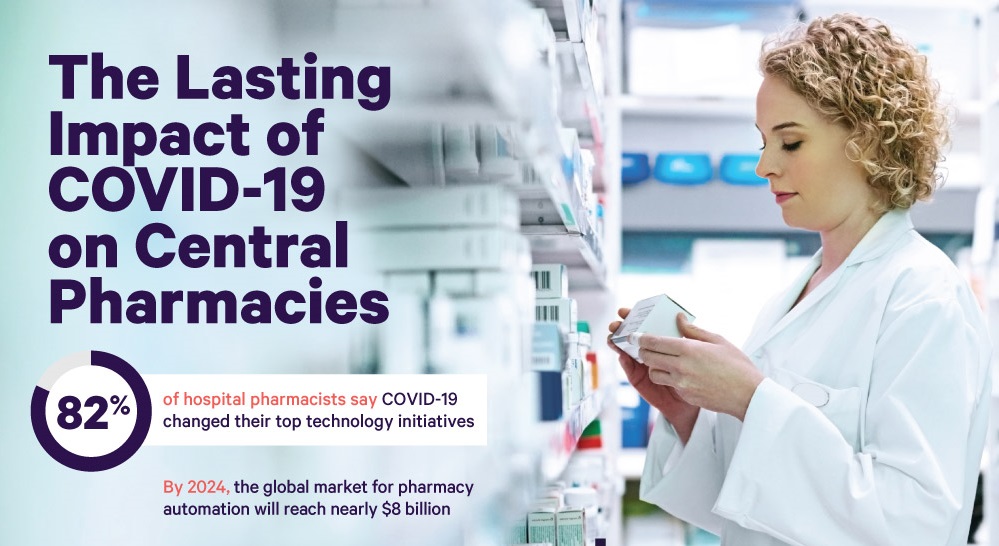By 2024, the global market for pharmacy automation will reach nearly $8 billion. Automation is needed in central pharmacies in large part due to the stresses caused by COVID-19. In operations, 70% of the pharmacists in hospitals reported taking on new job responsibilities during the pandemic. This meant filling hospital gaps in hand sanitizers, disinfectants, and medications.
Hospitals also changed medication use guidelines to better address COVID-19 treatment and investigational drug studies. Implementing prevention measures like physical distancing and provision of PPE have increased costs for the pharmacy. Meanwhile, drops in elective procedures and new prescriptions have led to lower revenues, a dangerous combination for any business wanting their doors to stay open.
With costs so high, pharmacists need to be smart about where they invest their money. Right now, investing in the right people is a difficult task. As of last May, 80% of pharmacies struggled to fill open positions. The most common vacant positions were pharmacy technician (90%) and front-end employee (60%). Both of these positions faced extreme burnout thanks to the pandemic. They also aren’t paid as well as other jobs in the pharmacy, though wages have risen recently.
The problem is that these jobs are under such high stress that workers have left the profession in favor of greener pastures. This exodus exists across the healthcare industry; more than 6.5 million healthcare workers will leave by 2026. Only 2 million new workers will come in to fill their place during the same time period. The rest of these jobs will have to be automated.
How could automation in pharmacy technology help staffing shortages? One example of pharmacy automation includes an automated dispensing system. An automated dispensary could pick nearly 6 times as many medications per hour as a pharmacy technician (700 versus 120). Meanwhile, the average operating cost of a dispensary system is $12 an hour, noticeably less than the average $18 wage received by pharmacy techs. Machines could also sort, count, and package pills on any scale, eliminating the most redundant of tasks for the pharmacy techs that remain.
Another big problem facing central pharmacies is drug shortages. Even before the pandemic, drug shortages were the #1 issue plaguing hospital pharmacies. In 2020, 86% of hospitals reported even worse shortages of the drugs they need. More than 60% are facing shortages of more than 10 drugs. The drugs missing are critical to surgery and human health, including but not limited to albuterol inhalers, anesthetics, sedatives, and corticosteroids.
Automation can’t fix supply shortages, but inventory tracking technology could allow pharmacies to make better use of what they already have. 16% of hospital pharmacy inventory is wasted to expiration. Dispensing medication on a first in, first out basis limits this issue. Locating and disposing of recalled lots is also an important task made easier by inventory tracking. Said tracking can also help keep an eye on the movement of controlled substances and ensure they aren’t being abused. Pharmacy automation can keep hospitals open in post-pandemic years.





 WebProNews is an iEntry Publication
WebProNews is an iEntry Publication